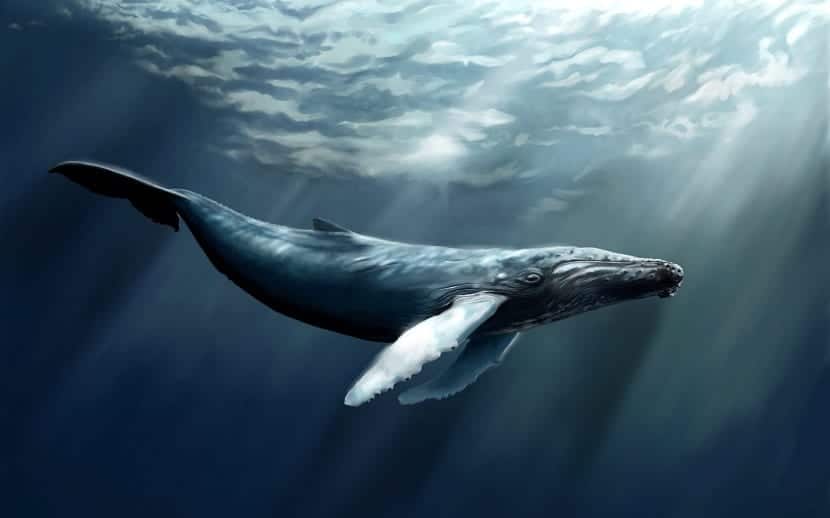
Nature can surprise us in an incredible way. The size of the animals can be inordinate. This occurs with the main mammal of this article, the blue whale. It is an animal that is capable of measuring up to 108 feet long and weighing around 190 tons. It lives in the seas and oceans. They are considered the largest animals in the world and their way of life is very characteristic.
Delve with us in an article where you can find the characteristics, way of life, feeding and reproduction of the blue whale.
Key features
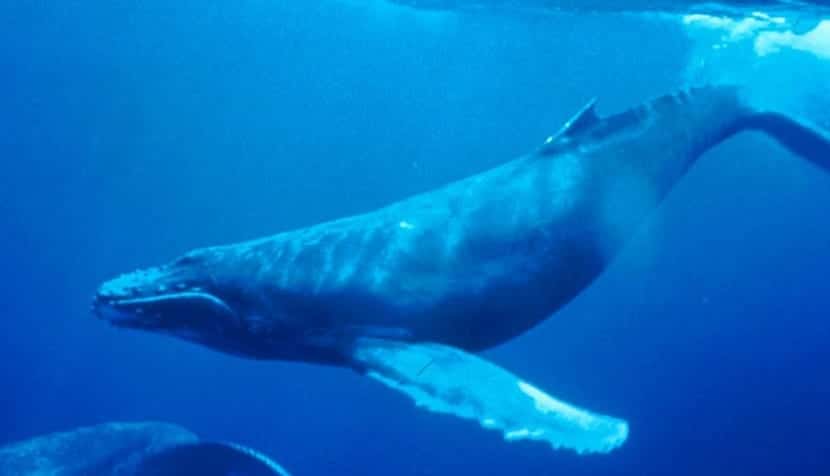
It is the largest animal. It is also the largest of all whales. One of their main characteristics is that, although they are enormous in length, they are also equally thin. This is how it allows your body to be distributed evenly. If his weight was wrongly distributed, he would have difficulty swimming. Thanks to this good weight distribution and the thinness it presents, it can move quickly in the water.
The blue whale has very long fins to be able to move its whole body. Therefore, they are capable of moving at high speed in the water despite their large size. Typically, they reach a rate of 12 miles per hour. But if the situation requires it, will be able to swim up to 30 miles per hour.
In their behavior we find groups that have different characteristics. In general, they tend to be solitary animals, since they need a large living space to develop and live. However, on numerous occasions, we come across a pair of whales that swim and live together. It is not common to find more than two whales. Most of the time we see two whales together it will be the mother and her baby.
We can only see several whales together when the area has great food. This makes them stay together longer and can live in community. As we already know, the blue whale is a mammal, so it does not have gills, but rather lungs. It is able to retain air and stay in the water under 20 minutes. Once this time has passed, you will have to surface to catch your breath. This makes it a highly demanded animal for sighting. They do not usually live in depths, since they need to come out to breathe. It is perfect for sightings from boats.
Feeding and distribution of the blue whale
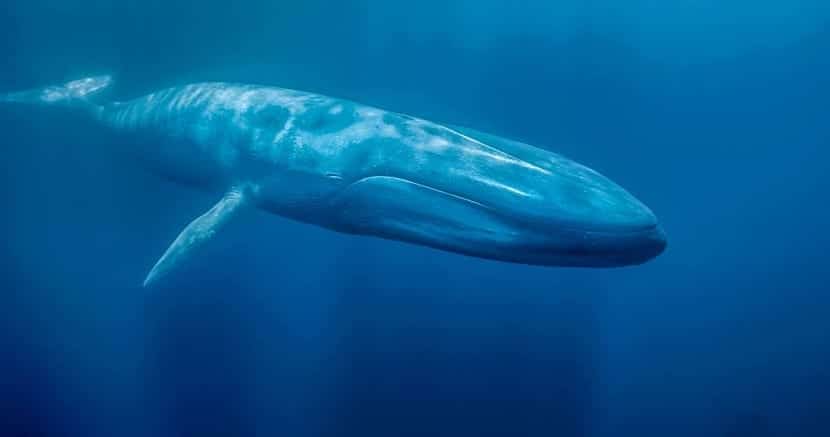
It introduces large amounts of krill and other smaller life forms into its diet. Their favorite food is squid and they eat more when they are abundant. They can eat up to 8.000 pounds of food each day whenever they can.
Feeding a baby whale is a fairly complete job for the mother, since she is capable of consuming between 100 and 150 liters of milk a day.
As there are so many subspecies of blue whales, it is normal to be confused with other types of whales if you are not a specialist in it. Normally, the range through which it is spread it encompasses the Atlantic and Pacific oceans. Some people have identified this animal in the Indian Ocean, although I have already said that they may be mistakes.
Due to human action, the range of this mammal has dropped dramatically. Both natural habitats and ocean conditions in general have declined. The seas are heavily polluted and the whales are suffering the consequences. Previously they were distributed almost throughout the world's oceans.
Reproduction and conservation
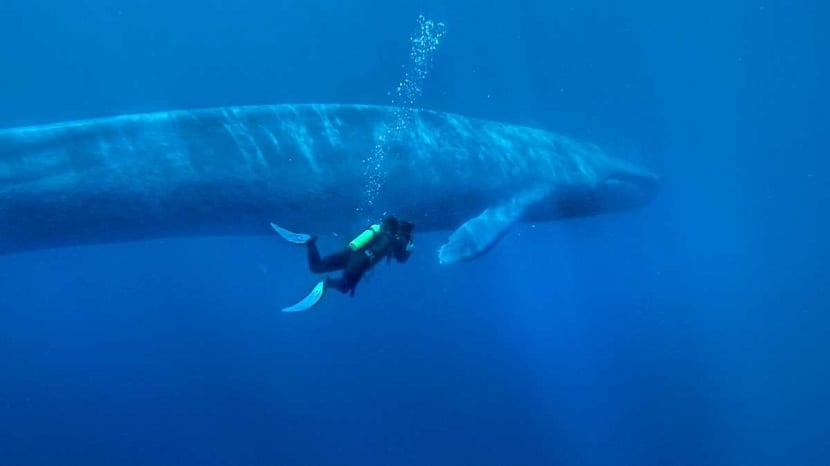
These animals have a long season for breeding. Unlike other fish that have a shorter age, the blue whale begins the breeding season from late autumn and remains until winter. There is not much information about the process of finding a partner, so we cannot describe well what the process of courtship of couples is or if they send signals to call each other. This is probably the method they can use.
Females mature when they reach the age of 10 years. The males are somewhat later and need 12 years to mature. The female will be able to have young every two or three years. Even though they are said to be babies or calves, a newborn whale can be perfectly 23 feet long and weigh up to 3 tons. It is not something that, precisely, we can call small.
Due to the impacts of humans and the slow reproduction cycle, the conservation status of the whales is in detriment. In the mid-60s, whale populations began to decline dramatically. Today, there are only about 12.000 individuals. Some specialists think that there may be more than 12.000 hidden throughout the rest of all the oceans. This can be deduced because there have been some sightings near the Arctic region.
Human action
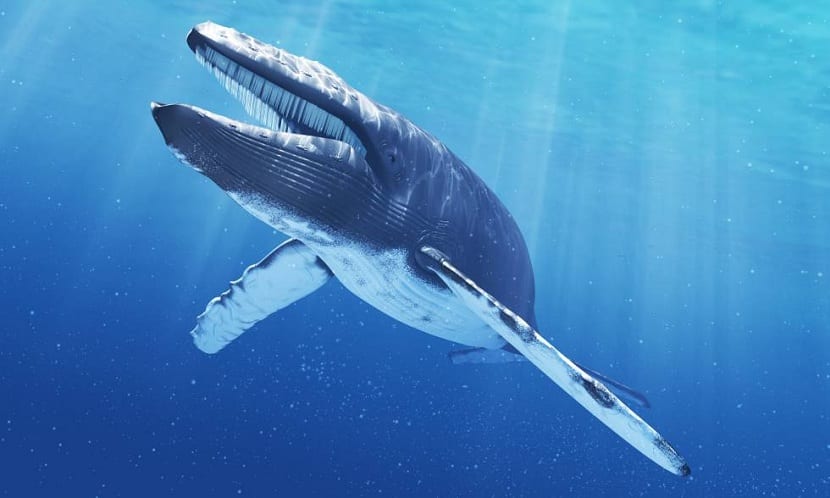
Whales were very common animals in ancient times. The problem they have is that, having such a long life (their life expectancy is close to 80 years), their cycle is very long. To be able to reproduce they need between 10 and 12 years of maturity and the female can only have young every two or three years. This slows down their playback. However, the environmental impacts on the seas and oceans are increasing daily. These animals are increasingly vulnerable and little can be done about it.
Still, there are many efforts to conserve these animals. Since human beings have a special interest in them, this has cost them a high price. The number of hunted blue whales was so great that in 1966 their capture had to be prohibited. Although their hunting is prohibited at the moment, with the low number of specimens it has been difficult for them to recover.
Despite being incredible and well-known animals, they are being devastated by human action. Another proof that we are destroying everything around us. I hope the whale can recover and improve populations over time. We have to be concerned about the importance of these animals.